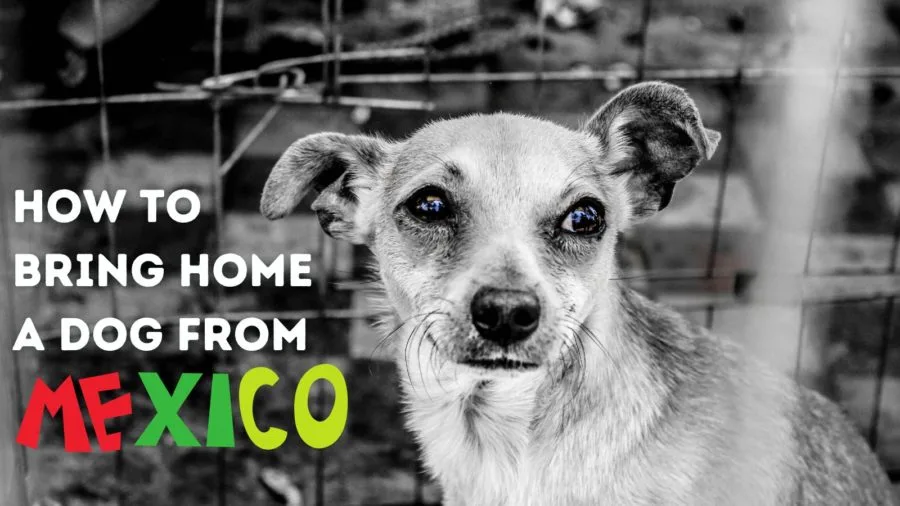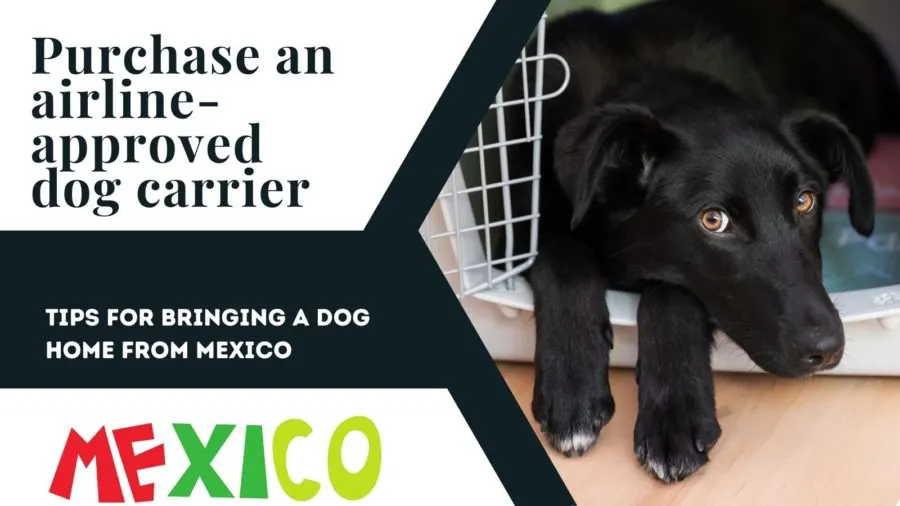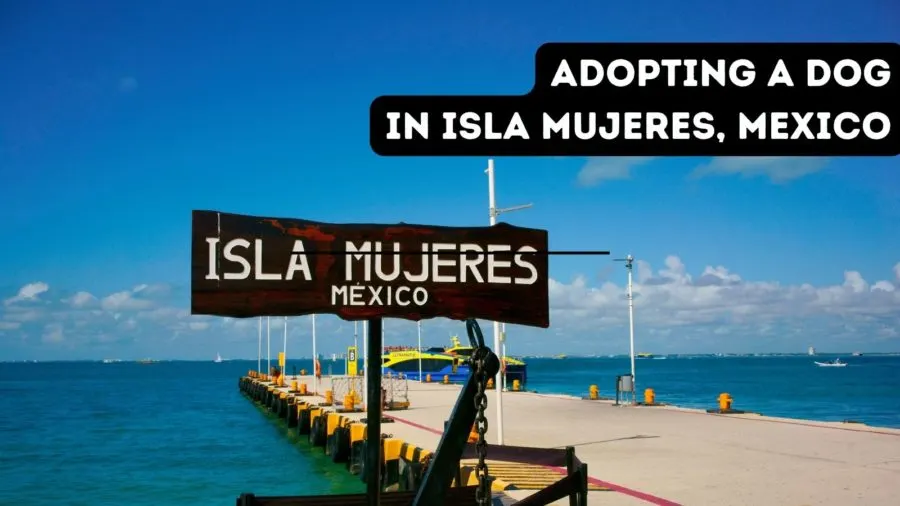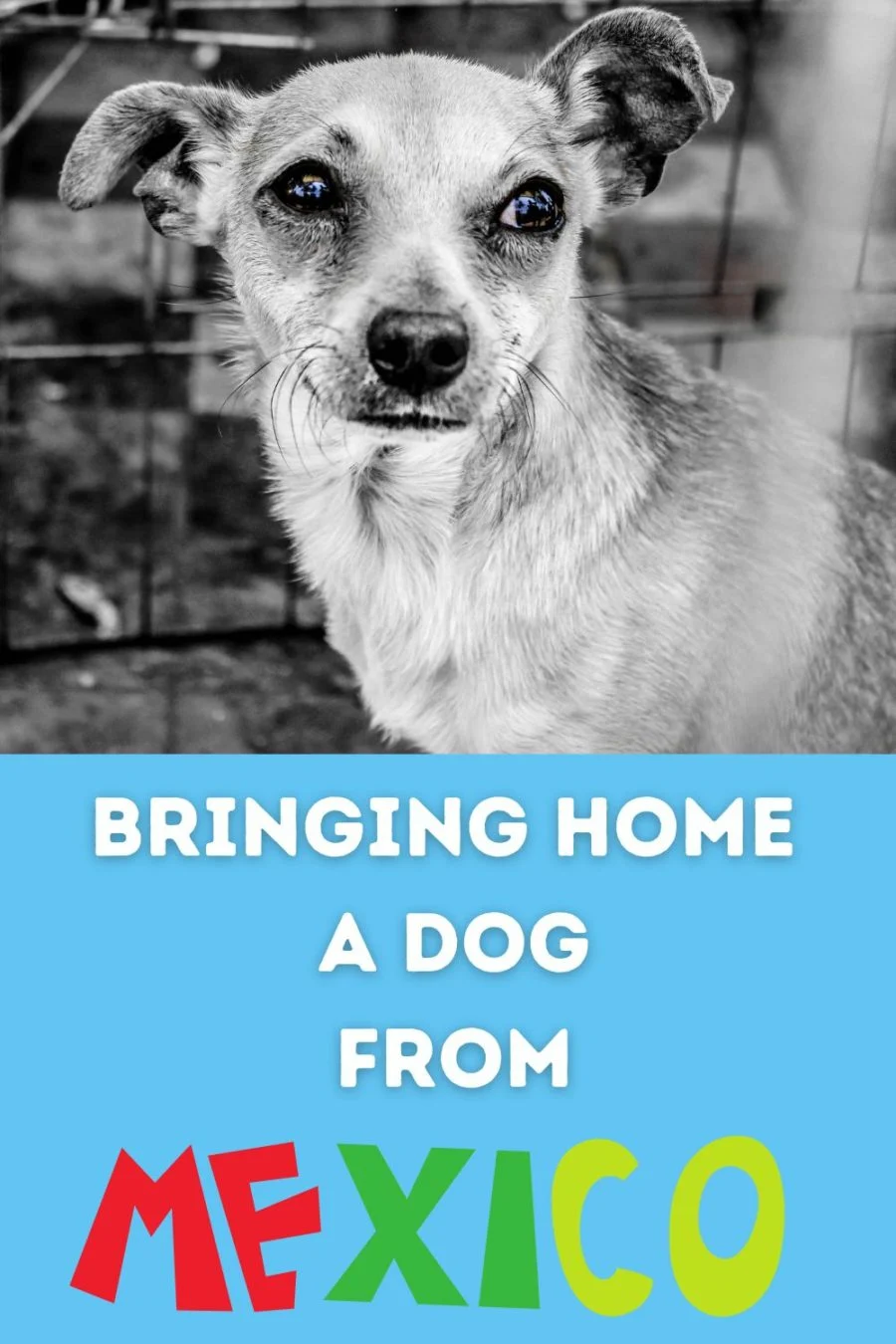Have you ever vacationed in Mexico and seen a stray dog you’d love to take home–but had no idea just how to accomplish that task? Bringing a dog home from Mexico is a lot easier than you might think!
Today we have a guest post from Alison Current, found of Isla Animals rescue which began on Isla Mujeres and soon will be relocated near Cancun.

For nearly two decades, Alison Sawyer Current has divided her time between Colorado and Mexico, operating Isla Animals, helping many travelers bring home a dog or cat from Mexico. For her work, in 2005 she received The Doris Day Animal Kindred Spirit Award, and she consulted in Mexico City for the Forum on Small Animal Overpopulation in Mexico.
The author of No Urn For The Ashes (Bayfire Press Publishing) is using a portion of the proceeds from the sale of her book to further the care of her beloved extended feline and canine family.
Tips on Bringing a Dog Home from Mexico
It’s a beautiful day and you love the warm tropical flavor of Mexico except for the sad sight of the animal condition. One special stray cat or dog has befriended you and you are thinking, it would be great if you could take the cutie home with you.
What a great souvenir that would be. Not as easy to pack as a t-shirt but not as hard as you might imagine. I have sent hundreds of animals out of Mexico and below is a list of suggestions to help you take your new friend home.
Check With Your Airline
Call your airline or look up its web site to check their policies on transporting animals. Most major airlines will transport dogs and cats in the luggage department. I won’t list them because they change these rules and regulations all the time.
Talk to Local Animal Experts
If you are anywhere on the Mayan Riviera contact Isla Animals. Even if you are a long way from Isla Mujeres, we may be able to put you together with the right people.
Ask around for a local animal rescue group or for the whereabouts of the local veterinarian or animal shelter.
Visit a Veterinarian in Mexico
Take your cat or dog to the local veterinarian or animal shelter to assess the health of the animal and get shots if needed.
Puppies under four months do not need rabies shots. Older dogs do need a rabies shot and a certificate saying they’ve had one; also get a general health certificate.
(If you are entering the US, you’ll find the regulations for bringing in a dog here. Also check with your state for specific regulations such as the specific Texas regulations for bringing in an animal.)
Purchase an Airline-Approved Pet Carrier

Wal-Mart and Costco sell animal crates in all sizes. When in doubt, get the next size larger, as airlines will refuse if the animal is too large for the crate.
If your new pet is small, you may be able to take it inside the cabin of the plane; it can go under the seat in front of you. The best way to get around the size regulation in this case is to buy a soft carrier.
Arrange Transportation to the Airport
The next thing to do is to arrange transportation to the airport. Many taxis and vans will not take animals. We use one company for this and they are wonderful and will happily pick you up anywhere in the area. Call Solomon at 998 845 8503, tell him you are transporting an animal. If you find the phone system daunting, ask someone where you are staying to help you.
Arrive at the Airport Extra Early–with Supplies
Lastly, get to the airport at least three hours before your flight, and take a cleaning kit with some wet paper towels in a plastic bag, a bag for garbage, a container for water, spare newspaper for the bottom of the crate and a leash or rope so you can walk the animal. There is a nice grassy area outside the airport.
Show courtesy and respect to airport employees, it helps a lot. If someone gives you a hard time, politely ask to speak to their superior, sometimes the staff doesn’t know the animals policy and won’t admit it.
When You and Your New Dog Arrive Home
When you get home, give your pet quiet time to settle into his or her new life; sometimes the stress of travel can give them tummy problems, this should pass.
Be sure to get to the vet as soon as you can for that first check up. If you mention that your pet is a rescue animal they often give the first visit for free. If your vet has any questions, they can email me and if I don’t know the answer I will know someone who does.
Helping to Transport a Dog to a US or Canada Rescue
Isla Animals, a 501(c)(3) organization, also works to get the numerous stray dogs they assist into forever homes, either through adoption or transport to a waiting rescue in the US or Canada.
“We have rescues in different places in the US and Canada because Canadian airlines are a little easier and cheaper to send animals. We love when people write us and give us their dates and ask if they can take a dog back. We do everything and make it easy for them. We’re very careful to only send healthy dogs; they’re fully vetted because if we send an unhealthy dog, it just gives a bad name to all dogs in Mexico so we’re very careful.”
“If someone escorts a dog, they will be met by someone with the rescue we’re working with. The rescue takes the dog to the vet and then they’ve usually already set up a foster home because we send photos and a personality profile ahead of time. We often talk to the foster family to see if they have any questions or problems.” The rescue can stay in touch with fosters and adopters through Skype and email.
And, perhaps best of all, they stay in touch through photos. The images of happy dogs, once strays but now living the life of leisure in a family home, help balance the challenges that come with running a busy rescue.
Among the factors that have slowed the acceptance of dogs into the home are the ticks that plague the region. “When the dog is covered in ticks, people don’t want to let him in the house, and the dog is dejected. We get people in to help bathe the dogs at the shelter and then hand them back a gorgeous dog.”
Adopting from Isla Animals

Like many travelers, artist Alison Sawyer Current first came to Isla Mujeres, Mexico and saw the beauty of this tropical island near Cancun. Surrounded by clear Caribbean waters and lined with powdery beaches, the island has a small town atmosphere with a fiesta flair. The warmth of the tropics was a far cry from the Colorado town she left.
But, like so many destinations, this tranquil island had a sad side as well: an animal control problem that was often answered with electrocution and poisoning. Unlike many travelers, though, Current didn’t head for home but tackled the problem head-on: she founded a rescue.
Isla Animals was born in 2002 and, since that time, has saved tens of thousands of dogs from the Yucatan streets and helped local residents provide care for their own pets, whether veterinary medications or spay and neuter services.
The rescue has grown, attracting international attention in 2005 when Current received The Doris Day Animal Kindred Spirit Award, and in 2007 when she was invited to Mexico City for the first Forum on Small Animal Overpopulation in Mexico.
The rescue also became the focus of a documentary, Last in Line.
Because there is so much to do at the Isla Animals shelter, Current often relies on help from travelers in the form of donations, volunteering, or fostering and adopting.
Donations—whether products or cash— help Current with services like treating a stray animal at the clinic or supplying dewormer to a family dog of a local resident.
“I have people email me all the time or they can contact me on the Isla Animals Facebook page. They tell me where they’re coming from and ask if they can bring anything. We often ask people to bring down collars or leashes or dog shampoo or just the everyday things we use at the shelter to help the animals. It’s such a great help because the more donations we get like that, the more that we can do to help the animals that are here and are neglected.”
That neglect that Current sees on the island as well as on the mainland have spurred the rescue to take an active role in the lives of local pets, encouraging good veterinary care and spay and neuter. “A big part of what we do is education,” says the Canada-born rescuer.
“Isla Mujeres was originally a fishing village, and suddenly it was overtaken by tourism. The people here have not had a lot of training as to how to take care of their animals, and they’re not aware of what’s available. One of the problems we have is we’re trying to do a vaccination campaign.
“If you ask someone here if their animal is vaccinated, they’ll say yes because for the past 20 years, the Mexican government has gone into different parts of Mexico and given free rabies vaccines. It has been incredibly successful—but many people here think that rabies is the only vaccination their dogs need. That’s absolutely not true because like anywhere we have distemper, parvo, and all those things so we’re really pushing for those vaccinations.”
Current also works to help residents integrate their dogs into their homes and their lives, encouraging them to bring their dogs indoors.
Related Posts
Taking Your Dog to Puerto Rico? Learn the New Rules!
How to Bring a Dog into TexaBringing a Dog Home from Mexico
Pin It To Remember How to Bring Home a Dog from Mexico

- How to Calm a Dog During Fireworks - June 20, 2024
- Taking Your Dog to See Santa: Tips for a Jolly Visit! - December 7, 2023
- The Pug Dog Price Tag: What You Need to Know Before You Get Your Pug - September 7, 2022
